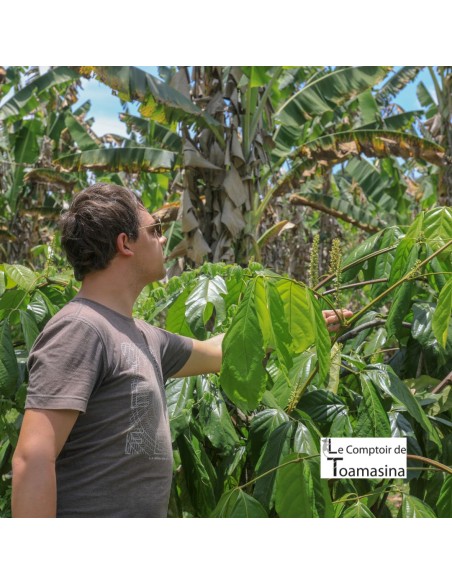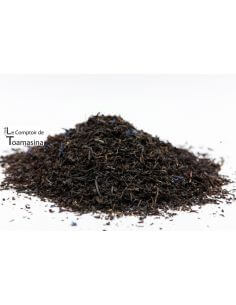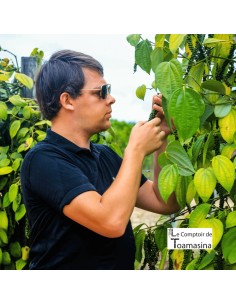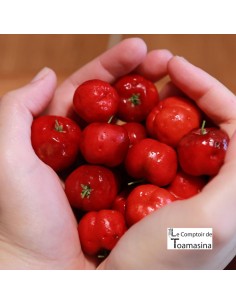The fruit
Guarana fruits are distinguished by their predominant red color , accompanied by orange and yellow nuances . When fully ripe, they partially open, revealing one to three dark brown seeds , the base of which is enveloped in a thick white aril .
Harvesting is carried out at this stage to prevent the capsules from opening completely and thus prevent the seeds from falling. The fruit contains guaraine , a substance similar to caffeine, known for its stimulating properties . It increases resistance to mental and physical efforts while reducing mental and motor fatigue .
Plant and Cultivation
Plant
Guarana is a climbing perennial shrub adapted to hot, humid tropical climates . It can reach up to 10 meters in height when it uses trees for support. In isolated cultivation, it adopts a bushy form and generally does not exceed two to three meters in height.
Culture
Brazil is the only country to produce guarana on a commercial scale. The average productivity of Brazilian plantations is 298 kg per hectare . This low productivity can be explained by several factors: limited use of selected clones , planting of unimproved traditional varieties , aging of plantations, high incidence of parasites and diseases , as well as a lack of appropriate cultural care .
For optimal commercial production, it is recommended to use selected seeds or plants . Specialists advise propagating guarana by rooting cuttings , taken from herbaceous branches with fully developed leaves. Propagation by seed is not recommended due to high genetic variability , which results in non-uniform orchards and fluctuating productivity.
The Brazilian Agricultural Research Company ( Embrapa ) has developed selected cultivars with high productivity . These clones not only offer a high yield — between 400 grams and 1.5 kilos of seeds per plant — but are also resistant to anthracnose , a disease caused by the fungus Colletotrichum guaranicola , which causes serious damage to crops.
Plants obtained by cloning have the advantage of requiring a shorter training time , of seven months, compared to twelve months for traditional plants grown from seeds. Clones start producing after about two years , compared to four years for traditional plants. Commercial production stabilizes after three years for clones and after five years for traditional plants. In addition, the survival of clones after one year of planting exceeds 90% , compared to less than 80% for plants grown from seed.
For marketing, the guarana fruit must be pulped and roasted . After harvest, the fruits are stored in bags or stacked in a clean place for up to three days for fermentation. The place must have a cement or ceramic floor and be closed to prevent access by animals. Fermentation facilitates the removal of the shell, which is done manually or using appropriate equipment. After pulping, the seeds are washed in clean water and classified by size using a six millimeter mesh sieve .
The seeds are then roasted separately to standardize the roasting point and obtain a homogeneous product. Roasting is done in a terracotta or metal container , over low heat, stirring the seeds constantly for uniform heat distribution. In a terracotta container, roasting takes four to five hours , while in a metal container it lasts around three and a half hours .
For the soft drink industry, seeds are ready when they reach the "crack point" or 5% to 7% moisture . For stick guarana, the humidity should be 8% to 12% .
The roasted seeds are stored in ventilated bags , preferably made of natural fibers such as burlap. Under appropriate conditions, they can be stored for up to 18 months.
























